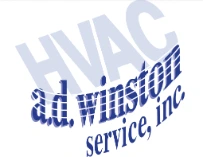Over the years there have been a number of rollouts and changes with the advancement of Industrial IoT (IIoT). Now that we are into 2017, several predictions can be formed about where things are headed. The predictions cover a range of topics which include: the rise of the interoperability; the business challenges stemming from the IT/OT convergence; the programmability at an edge; the wireless networking standards for Smart Cities; the enhanced cyber security rollouts; and the IoT talent recruitment opportunities. Here are 6 Industrial IoT Predictions for 2017:
1. Strongest of the security rollouts to date
The decentralized network architecture called Fog Computing, which brings the computing power closer to the area of data being generated and then acted upon, allows analysis, control, and the automation of things closer in an IIoT. Due to Fog Computing reducing the amount of the data sent to the Cloud, the cyber security will be empowered by reducing threats and attack surfaces of the IIoT networks. In industries where even milliseconds are very vital, certain processes will go to the Cloud and be closer to an edge.
2. IIoT app development programs are expected to begin to the outgrow or outpace consumers of IoT app development programs within three years
The third party of the IIoT applications that develop at an edge like Fog Computing will specifically alter use of big data and predictive analytics. Ability to filter the specific data directly at a source means the less need to gather all data for the broad analysis. The need for more apps in the edge and coinciding apps in the IT area of a business is coupled with big opportunities for app developers. This will push the shift from the consumer to the IIoT apps.
3. Enterprises will nurture the next generation of IoT talent
The great challenge affecting the IoT talent recruitment is called the skills gap: qualified applicants are sparse to take in for new digital-centric, IT roles. From the business perspective, the IT/OT convergence has further complicated the issue. The enterprises are transforming in ways they operate, and therefore, they have impacted everyone – especially parents on the operation side dealing with legacy systems. Every factor of this has created the talent gap for many organizations.
4. 802.11 ah (HaLow) protocol will become standard
With the increase of the Smart City initiatives, 802.11 ah (HaLow) wireless networking protocol is expected to overpower Bluetooth in 2017 for critical infrastructure applications of traffic management, energy efficiency, public safety, and the public infrastructure design. The HaLow shines; the high-speed data transmission rates for long distances with Bluetooth 5, fall flat. As urban areas continue to increase outward, the need for high bandwidth solutions will become of great importance and favor HaLow in the long run.
5. The public utility closure is expected to occur in 2017
Maturation of the interoperability standards and the evolution of remote data collection technologies are forcing the critical infrastructure and the utility organizations to adapt to the new pace. With the aging infrastructure and a high percentage of the workforce nearing retirement, existing management is struggling to match the resources needed to build a comprehensive, integrated portfolio of applications to support the organization’s goals.
6.Big Data and IoT will continue to be too big to ignore
With the term Big Data being used over time, the reality is that there are not many enterprises in B2B which have taken the plunge. The talks at Big Data conferences continue to discuss the fundamental concepts and the industries like pharma who, at first never considered their data “big”, began to understand how to plan for the future. The size is not what matters; the increase in variety and sources of data will offer more relevant insights and better outcomes.
DO YOU KNOW WHERE TO START?
It’s not as difficult as you think, when you have the right partner. Download a free brochure NOW! Smart Manufacturing doesn’t have to be complicated.



